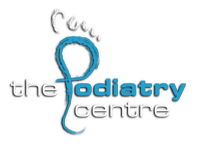How to Look after Elderly Feet.
It is hard to deny, our feet are important. Not only do they help us ambulate around but they also form the base of our body and work to help keep us upright. As we get older, so do our feet and as they do, there may be issues arising which may require assistance and care to keep us happy and healthy.
Podiatrist will often look at a persons feet and obtain a good insight into the general health of the patient. Factors such as skin texture, skin colour, thick or discoloured nails, uncomfortable or tight feeling skin or generalised pain in the legs of feet can be indicative of problems not often easily observed. Conditions commonly seen in the elderly population such as arthritis, diabetes or circulatory problems can easily cause any of the mentioned symptoms. This is why, much like a classic car, the older we get the more specialised care we need to keep our body healthy. Some common podiatry problems seen in the feet of elderly patients includes:
- Dry or calloused skin.
- Painful feet or joints associated with arthritis or overuse.
- Thick, discoloured or painful nails.
- Weakened muscles or reduced ability to control legs and feet.
- Decreased balance.
- Corns
- Tight or cramping muscles.
Podiatrists are specially trained to treat ailments that afflict elderly patients as well as creating appropriate programs to keep them walking and stay healthy. The more active people are, the healthier their bodies will be.
In order to help elderly patients, podiatrists may offer any number of services which may include but not limited to:
- Cutting and filing of nails.
- This is important for most elderly people who are no longer able to comfortably and safely cut their own nails. Keeping nails short and filed will make the feet feel more comfortable in socks and shoes and help avoid discomfort starting as a result. Often nails can get thick or tough with aging. A podiatrist can use a nail drill to reduce their size and thickness.
- Removal of callousing and corns
- Corns and callouses can often form as a result of pressure. They can also become sore and affect a persons ability to walk comfortably. Safe and effective removal will return feet to their previously happy state.
- Offer footwear advice appropriate to a persons body and needs. Shoes with soft upper material and supportive soles are often the best.
- Treatment of foot abnormalities which may be causing excessive pressure to build on certain areas.
- Monitoring of diabetes and potential diabetes related foot and lower limb complications. Podiatrists routinely look at a patients circulatory and nervous systems and identify problems and appropriate approach to avoid complications.
- General advice on health of feet and lower limbs.
Finally, there are a number of things that can be done at home to ensure that your feet are kept in good condition. Some DO’s and DO NOT’s definitely include:
- DO NOT walk around barefoot, even when you are at home.
- DO NOT attempt any self treatment of corns and callouses. Attempting to cut callouses and corns or applying acids from the chemist will do more harm than good to your feet.
- DO NOT wear tight shoes, socks or stockings as this may impact on your circulation.
- DO go for regular walks. Keeping as active as possible will improve your health.
- DO give your feet a regular soak in warm water with Epsom salts dissolved.
- DO moisturise your feet and legs regularly.
- DO seek guidance and advice from podiatrists or your doctor should any concerns arise.
Dr Anel Kapur (Podiatrist)
